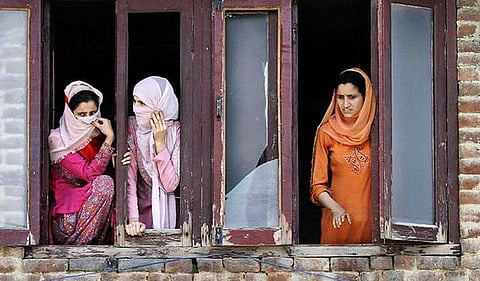The sheer incongruity of two soldiers in full battle gear standing under Chinar trees whilst women in simple pherans(loose gowns worn over the clothes) and chappals walked across fields on a November afternoon in south Kashmir set me thinking. What is it like to live in what has been termed one of the most militarised zones in the world? While the militancy that began in Kashmir in 1989 has diminished, there are still an estimated 500,000-700,000 security personnel in the state.
What is it like for Kashmir's women to carry out daily activities under such continuous male scrutiny and such visible symbols of hostility? What were the emotions of the women when their husbands and sons crossed the border into Pakistan and became militants? How did women view the protests of 2008, 2009 and 2010 when young boys came out on the streets and where many of them, including innocents returning home from school or mosque, were killed? What is the meaning of sacrificing for the struggle?

